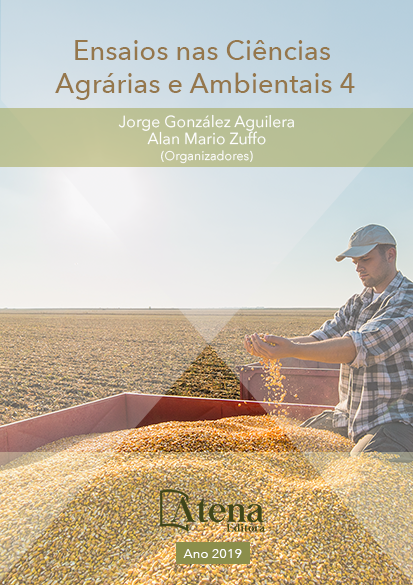
USO DA SEPARAÇÃO BOTÂNICA NA AVALIAÇÃO DA PORCENTAGEM DE CAPIM ANNONI 2 (Erasgrostis plana Ness) PRESENTE NA PASTAGEM EM UM SISTEMA SILVIPASTORIL NA REGIÃO DA CAMPANHA, RS
O capim-annoni-2 apresenta alta
habilidade competitiva podendo modificar
a estrutura e a diversidade da comunidade
vegetal. Com relação ao controle da espécie,
uma alta densidade de árvores pode exercer o
controle de gramíneas com baixa tolerância à
sombra. A integração pecuária – floresta é pode
ser responsável por recuperar áreas degradas
por esta poaceae. A área total do experimento
consiste em 34 hectares. As árvores de eucalipto
(E. grandis) foram estabelecidas em fileiras
triplas com espaçamento de 2m entre plantas
na linha e 3m entre linhas e com 34m e 14m
entre renques. No total, existem 12 potreiros.
Para avaliação da composição botânica foram
cortadas mensalmente três amostras no período
de 24 meses. As amostras foram levadas ao
laboratório de forrageiras e separadas em 6
categorias: gramínea nativa, gramínea cultivada,
leguminosa nativa, leguminosa cultivada, Capim
Annoni e outras. As amostras foram levadas à
estufa por 72 horas para avaliação de MS. A
% de Annoni presente nas amostras das áreas
melhoradas apresentou diminuição significativa.
Passou de 26% na primavera de 2013 para
13,4% na primavera de 2015. Na área nativa
(de tratamento conservador) a porcentagem
passou de 75,5% na primavera de 2013 para
18,5% na primavera de 2015. As técnicas de
manejo de um Sistema Silvipastoril aliadas ao
melhoramento de pastagens, podem estar
influenciando para a diminuição da presença de
Annoni na composição florística da pastagem
que inicialmente se encontrava altamente
degradada por esta planta invasora.
USO DA SEPARAÇÃO BOTÂNICA NA AVALIAÇÃO DA PORCENTAGEM DE CAPIM ANNONI 2 (Erasgrostis plana Ness) PRESENTE NA PASTAGEM EM UM SISTEMA SILVIPASTORIL NA REGIÃO DA CAMPANHA, RS
-
DOI: 10.22533/at.ed.40719160113
-
Palavras-chave: SSP; Áreas degradadas; Planta indesejada; Eucalyptus grandis.
-
Keywords: SSP; Degraded areas; Unwanted plant; Eucalyptus grandis.
-
Abstract:
The grass-annoni-2 must be a high
competitive aptential which are the change of the
structure of a diversity of the vegetal. Regarding
the control of the species, a high density of
images can exert control of grasses with the low
tolerance to the shade. The livestock - forest
integration is may be responsible for recovering
areas degraded by this poaceae. A total area of
experiment consists of 34 hectares. Eucalyptus
trees (E. grandis) were included in triple rows with spacing of 2m between plants and
3m between rows and with 34m and 14m between rows. In total, there are 12 potters.
For the botanical evaluation, the three samples were cut for a period of 24 months. The
species were taken to the forage laboratory and separated into 6 categories: native
grass, cultivated grass, native legume, cultivated legume, Capim Annoni and others.
Samples were taken to the greenhouse for 72 hours for MS evaluation. The% of Annoni
present in the samples from the improved areas was significantly significant. Total from
26% in the spring of 2013 to 13.4% in the spring of 2015. In the spring of August 2015.
In the spring of 2013 to 18.5% in the spring of 2015. The techniques of Management
of a Silvipastoril system allied to the and may be influenced to a greater presence of
anabolizers of the invasive plant.
-
Número de páginas: 15
- MELISSA BATISTA MAIA


